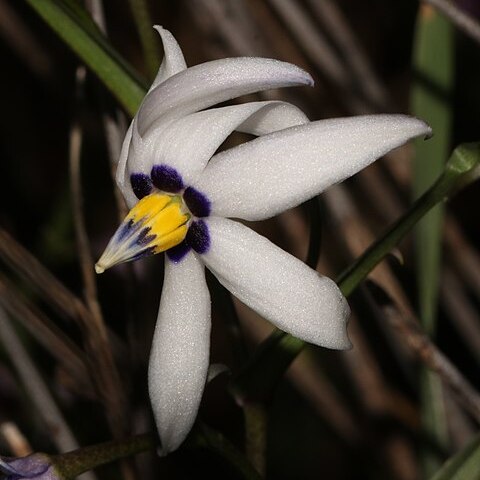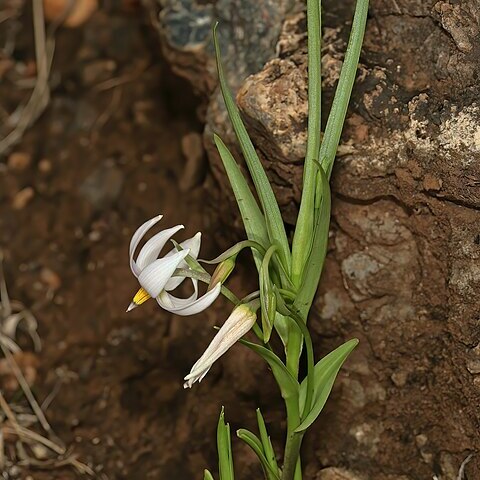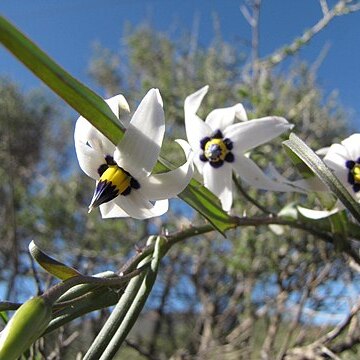Flowers few to numerous, solitary on peduncles in axils of cauline leaves, or rarely 2-3 per peduncle, sweetly scented, remaining open for a short time only; peduncles ascending or recurved, smooth, scabrid or beset with hooked prickles, with 1-2 bracts subtending a pedicellate flower.
Anthers connivent and ± adhering below the apex, or anthers free; both thecae of an anther opening by a common ± circular pore at the truncate apex, or opening introrsely by an oblique linear-elliptic pore at the apex.
Caulescent, with stems solitary, erect, occasionally branched, glabrous, longitudinally ridged; ridges smooth, scabrid or beset with scattered hooked prickles.
Leaves cauline, many, spirally arranged, sessile, the midrib on the lower surface sometimes scabrid or armed with hooked prickles.
Perennial herb with tubers usually produced deep below ground level; tubers clustered, rounded, fleshy, with fibrous roots.
Seeds 2-3 in each cell, ovoid, dark brown, warty, with hairs on the apices of the protuberances.
Tepals patent or reflexed at first, soon straightening to enclose the ovary, persistent.
Ovary 3-locular, semi-superior or superior.
Capsule globose to oblong, 3-lobed.



